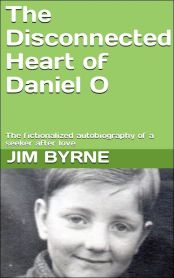~~~
Blog Post D3: Theory of trauma and childhood brain development
By Jim Byrne, Doctor of Counselling
1st July 2021 – Updated on 2nd December 2022
~~~
Daniel O’Beeve’s Development Trauma, and the long road to recovery
A case study in recovery from childhood trauma
Copyright (c) Jim Byrne, 2021-2022
~~~

This how I felt for the first half of my life!
Introduction
Traumatic experience in childhood is very real. The idea that children forget their serious adversities, and are unharmed by them, is false. The very fact of being traumatized in early childhood – by parental neglect, aggression, abandonment, or even serious communication mis-attunement – leaves its mark on the right hemisphere of the child’s brain, in the form of deficits in the development of their social and emotional intelligence. (Dr Allan Schore, 2015)[1], [2].
(The sculpture of the Brick Man, by Anthony Gormley, above, illustrates how I felt for the first thirty years of my life, becaue of how I was “raised”! [Jim Byrne]).
It takes a long time, and a lot of effort, to undo the damage of early childhood trauma; and most people never succeed in doing the work that is needed to get them onto a normal road of development and reasonable adult functioning.
One of the best ways to work on early childhood trauma – I have found – is to write your own autobiography (Goswami, 2020[3]) – preferably in a somewhat fictionalized form, to allow some distance from the pain, so that it can be digested without re-traumatizing yourself.
One of the ways that I have processed my own childhood trauma is to write the fictionalized autobiography of my alter ego, Daniel O’Beeve, which is introduced briefly below:
~~~
Newly released on 15th November 2022
The Disconnected Heart of Daniel O:
The fictionalized autobiography of a seeker after love
~~~
“How I healed my (mother-inflicted) childhood emotional wounds, and how you can heal yours!”
~~~
A fictionalized-factual life story, combined with a subjective psychological self-analysis of developmental trauma disorder
~~~
 By Jim Byrne, Doctor of Counselling – (and his alter ego, Daniel O’Beeve)
By Jim Byrne, Doctor of Counselling – (and his alter ego, Daniel O’Beeve)
~~~
This book is about one man’s journey away from his homeland and his emotionally barren family and priest-dominated culture, to a place where he might find love, acceptance and personal liberation.
Daniel’s heart-wrenching journey to freedom is like a detective novel, a psychological thriller, and a science fiction adventure, all rolled into one.
He shows the reader how to heal their own psychological wounds from childhood, and especially from their relationship with an unskillful or damaged mother.
…For more information, and a substantial extract from the book, please click this link…
~~~
That’s all for now.
Best wishes,
Jim
Dr Jim Byrne
Executive Director
The Institute for E-CENT
~~~
[1] Schore, A.N. (2015) Affect Regulation and the Origin of the Self: The Neurobiology of Emotional Development. London: Routledge.
[2] Van der Kolk, B., Mark Greenberg, Helene Boyd, John Krystal, (1985) ‘Inescapable shock, neurotransmitters, and addiction to trauma: Toward a psychobiology of post-traumatic stress’. Biological Psychiatry, Vol.20, Issue 3, 1985, Pages 314-325,
[3] Goswami, U. (2020). ‘How to heal through life writing: Learning to write about trauma helps you to process the painful experience, and gives you the life skills to overcome it’. Psyche/Aeon Magazine. Online: https://psyche.co/guides/to-start-to-heal-from-trauma-in-your-life-write-about-it